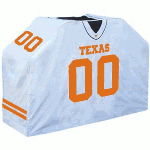There are two parts to cleaning your dutch oven. The first is to remove all the food and the second is to add to the protective finish that was started when your dutch oven was seasoned.
Remove the Food
First, use a plastic or wooden utensil to scrape all the food that you can from your dutch oven. A plastic dough scraper can work well or you might use a wooden utensil with a flat edge. A plastic mesh scrubber can also work. I've also used a rolled up ball of aluminum foil--it's soft enough that it shouldn't harm the finish of the oven. You don't want to use metal utensils to do this step.
After you've scraped what food you can off the dutch oven, add some warm water and let it work into the remaining food and then scrape again. I often put it over a stove and heat the water. Or you could do it over your charcoal or campfire also. After you have all the food scraped off, dump out the water and then rinse with warm water again. You might need to repeat these steps.
You might also find it helpful to put some water in the dutch oven after you remove the food and start it heating while you enjoy your meal. When you are done, dump the water out and scrape out as described above.
Note that you should not use soap when cleaning your dutch oven! The soap will just get into the pores of the oven and will give your food a soapy taste for some time. It will also break down the protective coating, so say no to soap.
Also, make sure that you don't put cold water into a hot dutch oven! It may either split or warp your dutch oven and ruin it for good. Either warm the water up or let the dutch oven cool a bit before you add water to your dutch oven.
Maintain the Finish
After all the food is scraped off and you've rinsed the dutch oven, now you need to heat it to dry up all the moisture that might be left. This helps prevent it from rusting. Then, just like when you seasoned your dutch oven, while it is warm, use a paper towel rub a little bit of oil into the dutch oven, both inside and out. This also helps to prevent it from rusting and continues to add to the protective coating that was created when the dutch oven was first seasoned.
Don't put too much oil on your dutch oven. Use a paper towel to wipe out the excess. Too much oil will just turn rancid.
When the oven has cooled, store it in a dry place for use the next time. It can be helpful to put a paper towel between the lid and the oven base to help absorb any moisture that might remain and allow some air to circulate in the dutch oven.
One thing that you can try to really help speed up your dutch oven cleaning is to use a dutch oven liner. This goes into the bottom of the dutch oven before you add the food and it just tossed out when you are done cooking. No mess at all! You can purchase these or use aluminum foil to make your own.
Those are the basics for cleaning a dutch oven. If you have any suggestions on this particular topic, please feel free to share in the comments below.
Next time I'll share with you a few Dutch oven cookbooks that will provide you plenty of recipes to try in your dutch oven.
See below for all the articles in this series on Getting Started with Dutch Oven Cooking:
- Getting Started with Dutch Oven Cooking - What to Look For in a Dutch Oven
- Getting Started with Dutch Oven Cooking - Buying a Dutch Oven
- Getting Started with Dutch Oven Cooking - Seasoning a Dutch Oven
- Getting Started with Dutch Oven Cooking - Where to Cook With a Dutch Oven
- Getting Started with Dutch Oven Cooking - Cooking with a Dutch Oven
- Getting Started with Dutch Oven Cooking - Dutch Oven Accessories
- Getting Started with Dutch Oven Cooking - Easy Dutch Oven Recipes
- Getting Started with Dutch Oven Cooking - Cleaning a Dutch Oven
- Getting Started with Dutch Oven Cooking - Dutch Oven Cookbooks
- Getting Started with Dutch Oven Cooking - Online Dutch Oven Resources
Be sure to sign up for the Outdoor Cooking Magic Newsletter to be notified when the next article is ready!
Make sure to follow my on Twitter and Like Me on Facebook!





Recent Comments